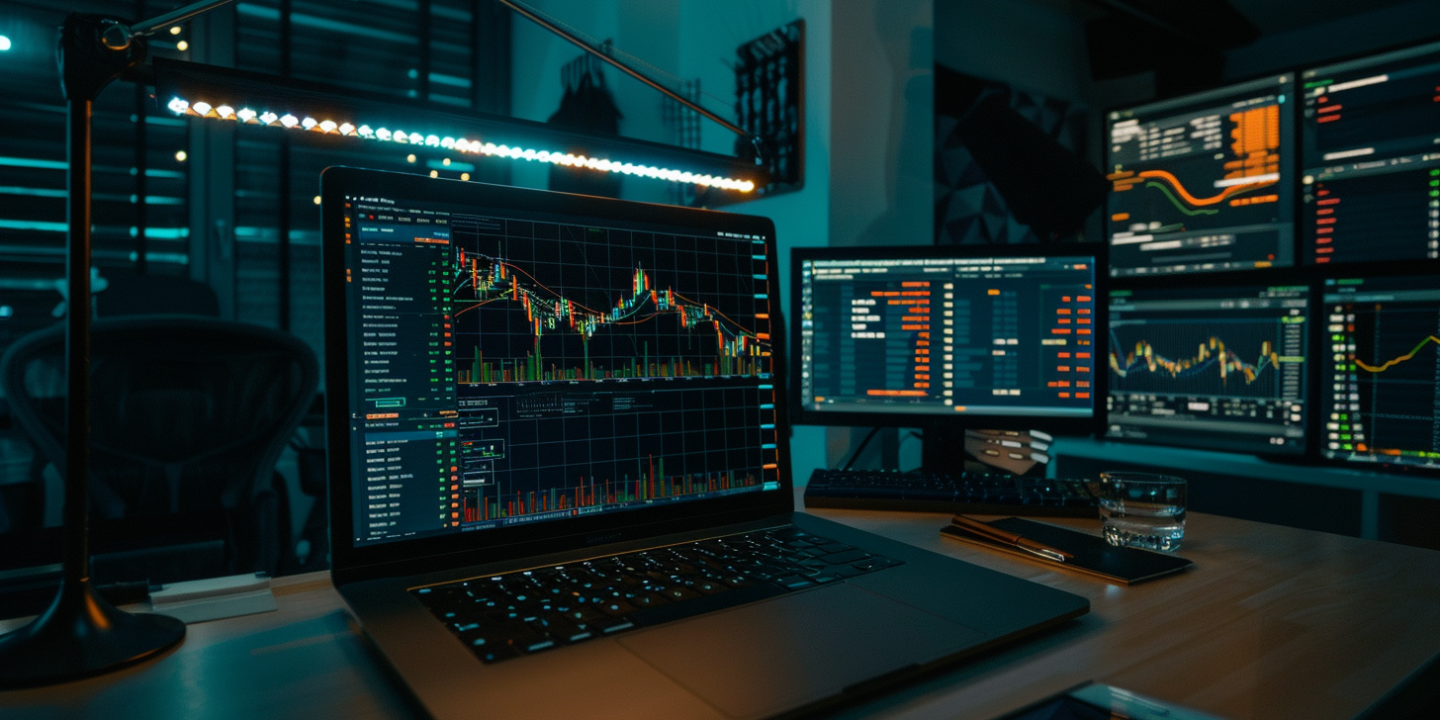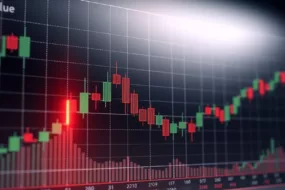
Introduction to Crypto Margin Trading
Understanding Margin Trading and Leverage can significantly enhance your Trading capabilities in the world of advanced Cryptocurrency Trading. They will help you to amplify your market exposure and potential profits, but they also come with increased risks. In this blog, we explore the nuances between Margin Trading and Leverage Trading in Crypto, highlighting their importance, differences, and how to use them in your Trading journey effectively.
Key Takeaways
- What is Margin Trading and Leverage Trading in Crypto?
- Key Differences and Similarities
- Similarities Between Margin Trading and Leverage Trading
- Choosing Between Margin Trading and Leverage Trading
What is Margin Trading in Crypto?
Margin trading in cryptocurrency involves borrowing funds from a broker or exchange to increase your trading position beyond what your capital allows. It enables traders to leverage their investments and potentially amplify their profits (or losses) based on market movements.
How Margin Trading Works?
When you engage in margin trading, you borrow funds (margin) from the platform to supplement your capital. This allows you to take larger positions than you could with your funds alone. The borrowed funds serve as collateral, and the platform may charge interest on the borrowed amount.
Key Characteristics of Margin Trading
- Borrowing Funds to Increase Trading Position: Traders can increase their exposure to cryptocurrencies without needing the full amount in their account.
- Margin Requirements and Maintenance: Platforms require a certain percentage of the total trade value as collateral (margin requirement). Margin maintenance ensures traders maintain sufficient funds to cover potential losses.
Tools and Platforms for Margin Trading
Various cryptocurrency exchanges and trading platforms offer margin trading services. These platforms provide tools such as margin calculators, real-time margin monitoring, and order types tailored for margin trades.
Pros and Cons of Margin Trading
- Potential for Higher Returns: Margin trading allows traders to leverage their positions, potentially increasing profit opportunities during market movements.
- Increased Risk: Amplified losses can occur if the market moves against the trader’s position, leading to substantial losses.
- Interest Costs: Borrowing funds incur interest costs, which can eat into profits or exacerbate losses during extended holding periods.
Margin trading requires a solid understanding of market dynamics, risk management strategies, and technical analysis to mitigate risks effectively. While it offers opportunities for enhanced returns, traders must weigh the potential benefits against the increased risks and costs involved.
What is Leverage Trading in Crypto?
Leverage trading in cryptocurrency involves using borrowed funds from a broker or exchange to amplify the size of your trading position beyond what your capital would allow. It enables traders to control larger positions with a smaller amount of initial capital.
How Leverage Trading Works?
When you engage in leverage trading, you essentially borrow funds (leverage) to increase the size of your trade. For example, a leverage ratio of 10:1 means you can trade with 10 times the amount of your initial capital. The borrowed funds act as collateral, and the platform may charge interest on the borrowed amount.
Key Characteristics of Leverage Trading
- Using Borrowed Capital to Amplify Trading Positions: Traders can enter larger positions than their capital would permit, potentially maximizing profit opportunities based on market movements.
- Leverage Ratios and Their Impact: Leverage ratios indicate the multiplier effect of borrowed funds on the trader’s position. Higher leverage ratios increase potential returns but also amplify risks.
Tools and Platforms for Leverage Trading
Many cryptocurrency exchanges and trading platforms offer leverage trading services. These platforms provide tools such as leverage calculators, margin monitoring, and risk management features tailored for leveraged trades.
Pros and Cons of Leverage Trading
- Magnified Profits with Small Capital: Leverage allows traders to increase their exposure to the market and potentially amplify profits with a smaller initial investment.
- Magnified Losses: While leverage can increase profits, it also magnifies losses. Losses can exceed the initial investment if the market moves against the trader’s position.
- Risk of Liquidation: If the market moves unfavorably, traders may face margin calls, in which they must add funds to maintain their positions or risk the exchange liquidating their positions.
Leverage trading requires a thorough understanding of market conditions, risk management strategies, and technical analysis to be successful. While it offers opportunities for enhanced returns, traders must carefully consider the potential risks and costs involved.
Key Differences Between Margin Trading and Leverage Trading
| Aspect | Margin Trading | Leverage Trading |
| Definitions and Mechanics | Borrowing funds from a broker or exchange to increase trading position beyond own capital. | Using borrowed funds to amplify trading size beyond own capital, typically through a multiplier effect (e.g., 2x, 5x, 10x). |
| Risk and Reward Profiles | Amplifies potential profits and losses based on market movements. | Magnifies potential gains and losses, with higher risk due to increased exposure. |
| Margin Requirements vs. Leverage Ratios | Platforms require traders to maintain a minimum percentage of the total trade value as collateral (e.g., a 50% margin requirement). | Indicates the multiplier effect of borrowed funds on the trader’s position (e.g., 2:1, 5:1, 10:1 leverage ratios). |
| Trading Strategies and Use Cases | Suitable for traders looking to increase their market exposure with borrowed funds, often used for short-term trading. | Used to maximize profit potential with a smaller initial investment, often employed in speculative or short-term trading strategies. |
| Tools and Platforms Supporting Each Method | Offered by various cryptocurrency exchanges and platforms, providing margin calculators, real-time margin monitoring, and order types tailored for margin trades. | Also available on cryptocurrency exchanges and platforms, offering leverage calculators, margin management tools, and risk mitigation features for leveraged trades. |
Understanding these differences is crucial for traders deciding between margin trading and leverage trading in cryptocurrency markets.
Each method offers unique advantages and risks, requiring careful consideration of market conditions, risk tolerance, and trading goals before implementation.
Similarities Between Margin Trading and Leverage Trading
Use of Borrowed Funds
Both margin trading and leverage trading involve using borrowed funds to increase the size of trading positions beyond what your capital allows. This amplifies the potential for profits (or losses) based on market movements.
Potential for Amplified Gains and Losses
Both trading methods offer the potential to magnify gains with a smaller initial investment. However, this also means that losses can be similarly magnified if the market moves against the trader’s position.
Importance of Risk Management
Effective risk management is critical in both margin and leverage trading. Traders must set appropriate stop-loss orders, carefully manage margin requirements or leverage ratios, and diversify their portfolios to mitigate potential losses from market volatility.
Impact on Trading Psychology
Both trading methods can significantly impact trading psychology. The potential for amplified gains may encourage overconfidence and aggressive trading behaviors. Conversely, amplified losses can lead to increased stress, fear, and emotional trading decisions.
Understanding these similarities helps traders recognize the inherent risks and opportunities of margin and leverage trading. By implementing robust risk management strategies and maintaining discipline in trading practices, traders can more effectively navigate these advanced trading methods.
Choosing Between Margin Trading and Leverage Trading
When deciding between margin trading and leverage trading in cryptocurrency markets, several factors should be carefully considered to align with your financial goals, risk tolerance, and trading style –
| Aspect | Margin Trading | Leverage Trading |
| Capital | Requires a larger initial capital since you borrow funds to increase your trading position. | Allows you to control larger positions with a smaller amount of capital due to the multiplier effect of borrowed funds. |
| Risk Tolerance | Involves substantial risks as losses can exceed your initial investment due to amplified positions. | Similarly carries high risk with the potential for significant losses if the market moves unfavorably. |
| Trading Goals | Suitable for traders looking to maximize profit potential by leveraging their trading positions in short-term market movements. | Often used by traders aiming to capitalize on short-term price fluctuations and amplify returns. |
| Market Conditions and Trend Analysis | Effective in volatile markets where short-term price movements can be capitalized upon with borrowed funds. | Beneficial during periods of high market volatility when leveraged positions can amplify profit opportunities. |
| Personal Trading Style and Experience Level | Requires a thorough understanding of market dynamics, margin requirements, and risk management strategies. | Demands a disciplined approach to leverage ratios, stop-loss orders, and trading psychology to manage amplified risks. |
| Tools and Resources for Informed Decisions | Utilize advanced trading platforms offering margin calculators, leverage management tools, and real-time market data. | Implement technical analysis tools, such as Moving Averages, RSI, and MACD, to identify potential entry and exit points. |
By assessing these factors and aligning them with your financial capabilities and trading objectives, you can make an informed decision between margin trading and leverage trading. Remember to prioritize risk management and maintain a disciplined approach to trading to navigate the inherent complexities and maximize potential returns in cryptocurrency markets.
Risks and Considerations
Market Volatility and Unpredictability
Cryptocurrency markets are known for their high volatility, characterized by rapid and unpredictable price movements. While volatility can create profit opportunities, it also poses significant risks of substantial losses within short periods. Traders must be prepared for sudden market shifts and implement strategies to mitigate potential risks.
Importance of Stop-Loss Orders and Risk Management
Implementing stop-loss orders is crucial in managing risk in advanced crypto trading. These orders automatically trigger a sale when a cryptocurrency reaches a predetermined price, limiting losses and protecting capital. Effective risk management strategies, such as diversification of investments and setting risk-appropriate trade sizes, help safeguard against market downturns and unexpected events.
Legal and Regulatory Considerations
Cryptocurrency trading is subject to varying regulatory landscapes across different jurisdictions. Traders should stay informed about local regulations concerning margin trading, leverage, and borrowing funds. Adhering to legal requirements ensures compliance and mitigates potential legal risks associated with trading activities.
Costs Associated with Borrowing Funds
Engaging in margin or leverage trading involves borrowing funds from a broker or exchange, which incurs costs such as interest charges or fees. These costs vary depending on the platform and the amount borrowed. Traders should carefully consider these expenses as they can impact overall profitability and should factor them into their trading strategies.
Navigating these risks and considerations requires a disciplined approach and a comprehensive understanding of market dynamics. By staying informed, employing effective risk management techniques, and adhering to regulatory guidelines, traders can enhance their ability to navigate the complexities of advanced crypto trading and strive for long-term success.
Conclusion
Mastering both margin and leverage trading is essential for maximizing your crypto trading success. Understanding the differences and similarities between these methods helps you navigate market dynamics more effectively. Prioritize risk management, stay informed about regulatory considerations, and use advanced tools to enhance your trading strategy.
By doing your research and practicing diligently, you can confidently seize opportunities in the volatile crypto market. Mudrex Learn blogs are here to support you on this journey, providing the resources and platforms needed to make informed and profitable trading decisions.
Download the Mudrex app and Start Your Crypto Trading Journey Now
FAQ Questions
1. What is the main difference between margin trading and leverage trading in crypto?
The main difference between margin trading and leverage trading in crypto is their approach to position size and timing. Margin trading involves borrowing funds to increase the size of a position beyond one’s capital, typically for longer-term trades to capitalize on market trends.
Leverage trading, however, utilizes explicitly borrowed funds to amplify potential returns from short-term price movements, allowing traders to control larger positions with less capital. Both strategies require diligent risk management due to their potential for magnifying both profits and losses based on market volatility and timing.
2. Can a trader use both margin and leverage trading strategies simultaneously?
Yes, traders can use both margin and leverage trading strategies simultaneously, as they serve complementary purposes. Margin trading allows traders to borrow funds from a broker or exchange to increase their buying power, enabling larger positions than their capital alone would permit. Leverage trading involves using borrowed funds to amplify potential returns from price movements. By using both strategies together, traders can diversify their approach, manage risk more effectively, and capitalize on opportunities in various market conditions.
3. What kind of tools are essential for margin trading?
Essential tools for margin trading include a margin account, which allows traders to borrow funds to amplify their trading positions. Real-time data feeds are crucial for making timely trading decisions based on market movements. Platforms offering flexible leverage options enable traders to adjust their risk exposure according to market conditions and personal preferences.
Practical risk management tools such as stop-loss and take-profit orders help protect against significant losses, while educational resources and customer support provide essential guidance and assistance for understanding margin requirements and navigating trading strategies effectively. These tools collectively enhance the ability to leverage capital while managing risks in margin trading scenarios.





